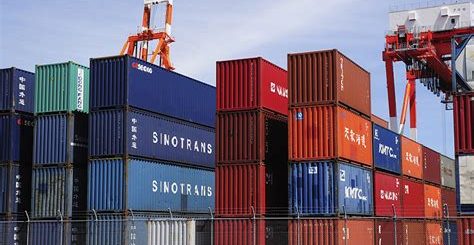Hassle‑Free Shipping from China to UK: The Consolidation Advantage (2025 Guide)
Introduction
Shipping goods from China—whether small parcel, e‑commerce inventory, or multiple supplier orders—to the UK comes with logistical complexity and cost. European and North American importers returning goods to the UK, or sourcing through China hubs, can gain substantial savings and reliability using consolidated freight (LCL, shared FCL, or air consolidation). This 2025 guide reveals how consolidation ensures smoother customs clearance, lower tariffs, fewer touchpoints, and predictable door-to-door delivery.
1. What Is Consolidated Shipping & Why It Matters for UK Imports
Consolidated shipping means combining multiple shipments into one sea container or air pallet:
- LCL (Less‑Than‑Container Load): For shipments under ~15 CBM. Ideal for combining multiple small supplier lots.
- Shared or Full FCL: Use a 20ft or 40ft container, either shared or dedicated—delivering best per‑CBM price.
- Air Freight Consolidation: Pallets combined for cooler transit times (5–12 days).
- Rail + Sea Multi-modal: Express transit via China–UK rail (~18 days using Yiwu–London route) then sea across the Channel.([turn0search20]turn0search8])
2. Cost & Speed Benchmarks (2025 Data)
| Mode | Transit (Door‑to‑Door) | Typical Cost | Ideal Use Case |
|---|---|---|---|
| Air courier (express parcel) | 3–7 days | ~£5–10/kg | Urgent small or sample orders |
| Air consolidation | 5–12 days | ~£4–8/kg | Mid-volume goods needing speed |
| LCL Sea freight | 25–40 days | £90–160/CBM (~$100–150/CBM) | Small‑medium volume from China ports |
| Shared / Full FCL | 25–35 days | £1,000–2,500 per container (~$1,200–3,500) | Volume imports >15 CBM for best value |
| China→UK rail + sea (multi‑modal) | ~25 days | intermediate cost vs sea and rail rails | Time-sensitive bulk with budget |
LCL is cost‑efficient for moderate shipments; FCL provides best unit cost when volume allows. Rail offers faster delivery with moderate cost.([turn0search7]turn0search14]turn0search3])
3. Consolidation Benefits: Why It’s the Smart Choice
💰 Lower Freight Cost
Shared container space significantly reduces freight per CBM. LCL quotes range £100–160/CBM but may include handling up to £30–60 THC and customs charges. FCL containers offer the best volume economy.([turn0search1]turn0search14]turn0search16])
🔧 Fewer Customs Events
Consolidation allows one customs clearance per container—reducing multiple brokerage fees, ensuring smoother import for EU/EORI or UK VAT compliance.
📦 Reduced Handling & Risk
Fewer touchpoints improve safety. Properly palletized and grouped goods reduce loss or damage. consolidation hubs offer professional packing and tracking.
📊 Predictable Lead Times
Consolidated weekly or bi-weekly sailings reduce scheduling uncertainty—even amid seasonal surcharges. Rail‑sea multimodal routes shorten transit to ~25 days.([turn0search20]turn0search1])
4. Full Cost Breakdown: Sea versus Air
Sea (LCL / FCL)
- LCL: £100–160 per CBM base—plus THC handling (£30–60), customs (£40–100), and inland delivery.
- FCL: 20ft container £1,200–2,500; 40ft container £2,000–4,000 depending on port pair and season. Multiple terminal, documentation, insurance, and trucking costs apply but remain lower per unit.([turn0search12]turn0search14]turn0search17])
Air Consolidation
- Costs ~£4–8/kg for consolidated pallets (vs £5–10+ courier). Cargo speeds ~5–12 days, ideal for smaller volumes needing fast import.([turn0search9]turn0search5])
5. How to Maximize Savings with Consolidation
📦 Align Suppliers
Ship goods from all suppliers to the same consolidation warehouse (e.g. Shenzhen, Shanghai, Ningbo) on the same schedule.
🌐 Multi-modal Options
Use China-Europe rail (e.g., Yiwu–London) for time-sensitive bulk shipments (~18 days) followed by short sea crossing.([turn0search20]turn0search8])
📦 Optimize Packaging
Pack efficiently, palletize, remove voids, consolidate SKUs—reducing CBM and wasted volume.([turn0search8]turn0search11])
📅 Time your shipments
Book shipments before Chinese New Year or Q4 surcharges. Pre-booking locks better rates.
🔎 Audit Freight Invoices
Review post-shipment for THC, demurrage or weight errors—recover up to 5–8%.([turn0search11])
✅ Choose Transparent Forwarders
Use agents with UK and Chinese hubs, customs expertise, trackable consolidation schedules, and DDP or port-to-door services.
6. Customs, VAT & Duties in UK
- UK VAT ~20% on declared cargo + freight; duty varies by HS code/origin.
- Use correct HS code and supplier info to avoid delays or audits.
- Forwarders should handle Import Declarations or Entry into the UK bonded system, including EORI registration and paying VAT.([turn0search16]turn0search2])
7. Real-World Example
A small European brand imports 10 CBM of mixed items from three suppliers:
- Option A: LCL shipping at £130/CBM → Total ~£1,300 freight + £300 handling → ~£1,600 total.
- Option B: Shared 20ft FCL at £1,800 → One container to UK port, lower per unit, faster customs, one delivery booking.
- Result: FCL delivered lower cost per CBM and simplified logistics for recurrent orders.
8. Common Challenges & How to Avoid Them
- Port congestion or delays: pick ports like Felixstowe or Southampton known for faster handling.
- Supplier timing mismatch: centralize arrival at consolidation hub within set window.
- Misclassification or undervalued cargo: consistent item descriptions prevent customs queries.
- Gaps in DDP vs DDU terms: ensure freight quote includes duties or inland trucking as needed.
- Insurance coverage gaps for sensitive goods: declared‑value or third‑party insurance advised.
9. Sustainability & Importer Advantages
Consolidated shipping minimizes carbon emissions by optimizing space. It grants small and mid-size importers competitive cost leverage akin to major buyers—while ensuring transparency and scalability.([turn0search8]turn0search1])
10. Step‑by‑Step Checklist
- Gather supplier volume estimate and size (CBM/kg).
- Choose optimal mode: LCL, FCL, air, or rail‑sea.
- Collect quotes including THC, customs, inland, insurance.
- Align supplier delivery to consolidation hub cutoff.
- Confirm packaging, HS codes, and EORI compliance.
- Book shipment, track Master B/L or AWB number.
- Monitor arrival, clear customs, and receive delivery.
- Review freight invoice, dispute discrepancies within 60 days.
Conclusion
For European and North American importers sending goods from China to the UK in 2025, consolidated shipping via LCL, shared FCL, or air consolidation offers the optimal balance of cost, reliability, and efficiency. Whether you need to minimize duty entries, reduce handling risk, or deliver without customs headaches, the consolidation advantage is clear. With proper planning, volume alignment, trusted logistics partners, and packaging optimization, you can enjoy fast, hassle-free imports at competitive rates.

